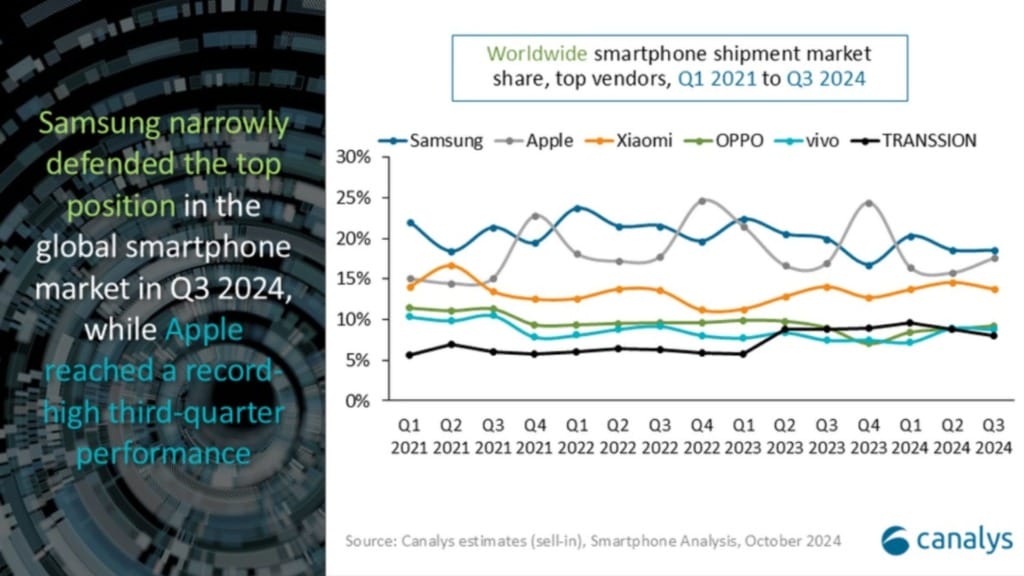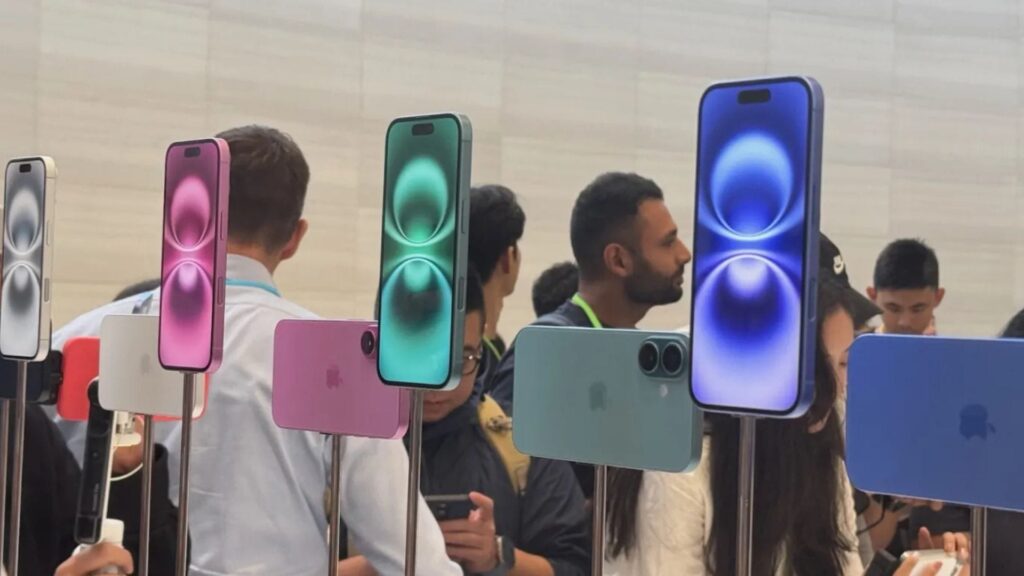The global smartphone market continues to grow steadily, showing growth for four consecutive quarters. In the third quarter of 2024, smartphone shipments increased by 5% annually, indicating a positive trend for the industry. According to leading technology market analyst firm Canalys, this growth is being driven by strong demand in emerging markets and the early stages of replacement cycles in more developed regions such as North America, China and Europe.
Apple and Samsung lead the market
Samsung maintained its position as the market leader, shipping 18% of the world’s smartphones in the third quarter of 2024. However, Apple was not far behind, securing an 18% share, the highest shipment volume in the third quarter. Apple’s record performance was primarily driven by the popularity of the iPhone 15 series and continued demand for older models.
Apple’s focus on the premium end of the market is paying off as consumers prefer higher-end devices. With strong sales of new and legacy models, Apple took advantage of this change, helping it secure a close second place in the global rankings.
Competition among top brands intensifies
Xiaomi maintained its third place with 14% of smartphone shipments. OPPO, on the other hand, showed a strong recovery and regained fourth place with 9% market share. This success was primarily driven by significant growth in India and Latin America, where OPPO has an expanding presence. Vivo entered the top five with a 9% share, rounding out the competitive field of the world’s top smartphone manufacturers.


Canalys noted that the gap between the top five brands is narrowing and competition is expected to further intensify in the coming months, especially during the holiday season. As consumer demand soars and markets evolve, all major companies need to stay on top.
Market challenges and prospects
While the overall outlook for the global smartphone market is positive, Canalys also warns of potential challenges. Uncertainty around demand generation and regulatory hurdles in some regions could hinder cell phone makers. Despite these risks, the market remains resilient and brands are focused on fine-tuning their strategies.
Canalys emphasized the importance of strong supply chain management, maintaining healthy inventory levels, and optimizing sales and marketing budgets. These factors are important for smartphone manufacturers looking to maintain or increase their market share in the coming months.
As competition intensifies, especially in the premium smartphone space, the ability to adapt and innovate will be critical for brands looking to succeed in this rapidly changing industry.


